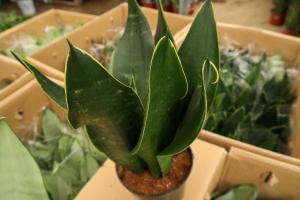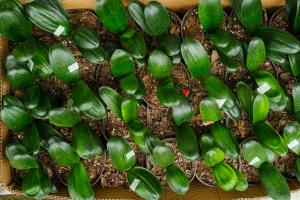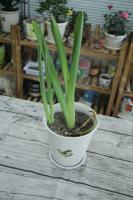Do Clay Plant Saucers Hold Water?
Many people prefer to use clay plant saucers because of their natural appearance and properties. Clay is porous and that is what makes it an excellent material for making plant saucers. However, a common question many gardeners ask is if clay plant saucers hold water. The answer is both yes and no. It depends on several factors.
Clay Material and Porosity
Clay is an absorbent material, and the level of porosity depends on how it was fired during the manufacturing process. Low fired clay tends to be more porous than high fired clay. Plant saucers made of low-fired clay tend to absorb water, while high-fired clay saucers are less absorbent. Therefore, if you want a plant saucer that does not hold water, look for high-fired clay ones.
Size and Depth of the Saucer
The size and depth of the plant saucer also determine its water holding capacity. A large and deep saucer will hold more water compared to a small and shallow saucer. Therefore, if you want a saucer that does not hold water, choose a shallow one that is just enough to hold the pot in place.
The Type of Potting Mixture and Plant Species
Another factor that affects the water-holding capacity of clay plant saucers is the type of potting soil and the plant species. Some plants require frequent watering, while others thrive well in dry soil. If you are growing plants that require less watering, it is best to use a high-fired clay saucer that does not hold water. On the other hand, if you are growing water-loving plants like ferns, a low-fired clay saucer may be suitable as it helps to keep the soil moist without overwatering the plants.
The Benefits of Clay Plant Saucers
Although clay plant saucers can hold water, they offer numerous benefits to plants. Clay has excellent water retention properties that help to maintain soil moisture. This prevents the roots from drying out or getting waterlogged. The porous nature of clay also allows for proper aeration of the soil, promoting healthy root growth. Moreover, clay plant saucers are environmentally friendly since they are made of natural materials and can be reused multiple times.
The Drawbacks of Clay Plant Saucers
The main drawback of clay plant saucers is the potential of overwatering plants. If the saucers are not drained correctly, water accumulates and causes waterlogging, leading to root rot. Additionally, clay plant saucers are prone to cracking when exposed to temperature changes or mishandling, making them less durable than other materials like plastic.
Conclusion
In conclusion, clay plant saucers do hold water, but it depends on several factors like clay material, size and depth of the saucer, type of potting soil, and plant species. To prevent overwatering and promote healthy plant growth, it is essential to choose a suitable clay plant saucer and ensure proper drainage. While clay plant saucers have their drawbacks, their benefits outweigh the disadvantages, making them an ideal choice for many gardeners.

 how many times do yo...
how many times do yo... how many planted tre...
how many planted tre... how many pine trees ...
how many pine trees ... how many pecan trees...
how many pecan trees... how many plants comp...
how many plants comp... how many plants can ...
how many plants can ... how many plants and ...
how many plants and ... how many pepper plan...
how many pepper plan...






























